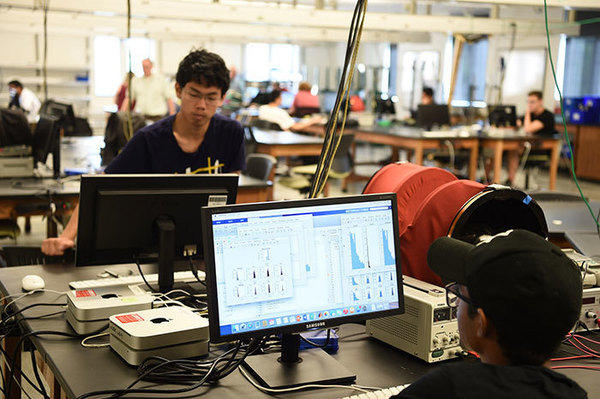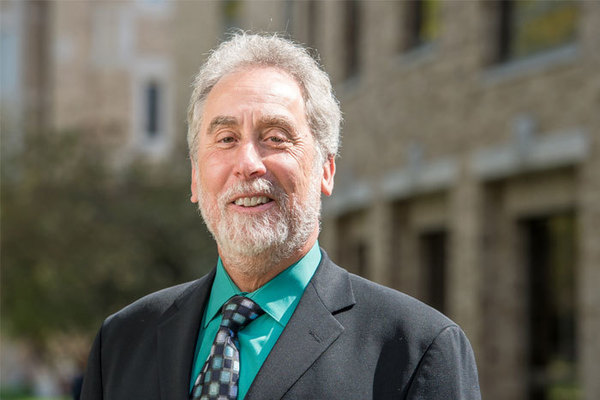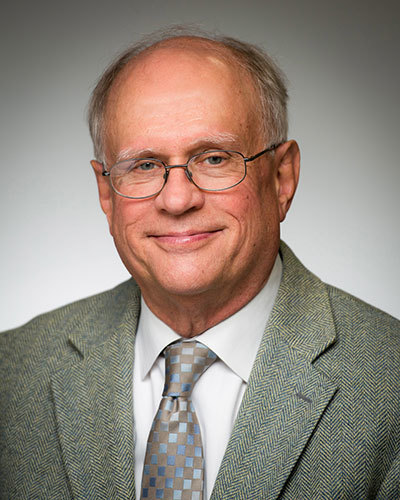
QuarkNet, a program founded at Notre Dame that brings university-level physics research opportunities to high school teachers and students across the country, has been granted funding through 2023 by the National Science Foundation (NSF). The NSF has funded the program since its inception in 1998.
 Mitchell Wayne
Mitchell Wayne
In addition to $3 million in direct NSF funding, QuarkNet will receive another $1.25 million over five years via NSF support of two collaborative particle detector experiment groups at the European Organization for Nuclear Research (CERN), which operates the Large Hadron Collider, the world’s largest particle collider, in Geneva, Switzerland. The two experiments, ATLAS and CMS, benefit from work generated by teachers at the 52 QuarkNet centers across the United States.
“It’s greatly satisfying to receive this funding,” said Mitchell Wayne, a professor in the Department of Physics who has been lead principal investigator for the QuarkNet program since 2004. In addition to Wayne, the other co-principal investigators for the program include Marjorie Bardeen, of Fermilab, and Morris Swartz, of Johns Hopkins University. “QuarkNet is a wonderful program, and is very well known in the particle physics community. It’s done great things for teachers and students over the past two decades, and I believe that QuarkNet has played an important role in U.S. particle physics during that time.”
 Randal Ruchti
Randal Ruchti
The program was the brainchild of Randal Ruchti, professor of physics, and three other co-founders, who wanted to resurrect interest and investment in the field in the 1990s after federal funding dried up for a planned particle collider in Texas. When that project, known as the Superconducting Super Collider, was abandoned, hundreds of physicists who had dedicated years of research to the project lost their jobs and left the field. Ruchti saw a need to rebuild public support for long-term physics research, as well as to develop a pool of future particle physicists.
Engaging high school teachers was his solution. With the support of Fermilab, the particle physics and accelerator laboratory located in Batavia, Illinois, and two other universities, the first four QuarkNet centers were launched in 1998 with short-term funding from the NSF. The agency began funding QuarkNet in five-year cycles the following year.
Nationally, more than 400 teachers each year gain scientific experience by working with university professors and laboratory scientists, according to Wayne. The teachers and their students have created components that have been installed in the detectors at the LHC, which in 2012 discovered the Higgs boson, a particle that bridged the gap in the understanding of the Standard Model of Physics. At Notre Dame’s center, 929 Eddy Street, an average of 15 teachers from schools within a 50-mile radius participate annually.
During previous funding cycles, enough money was granted so each QuarkNet center could also fund high school researchers. However, that component was dropped for this cycle, Wayne said, so the centers will need to seek internal funding to support students. Fermilab is continuing to support the program by funding a half-time staff teacher and providing computing and technical support for the entire program, Wayne noted, and is also designating a neutrino physicist to assist with projects.
With support from Notre Dame International, Wayne and QuarkNet national staff teacher Ken Cecire have brought QuarkNet activities to Santiago, Chile, and Mexico City, and they are exploring other international opportunities.
The Notre Dame QuarkNet center will move from the Eddy street location to a larger facility on Douglas Road, north of campus, in spring 2019. The planned move had been in the works before the most recent NSF grant was finalized.
Originally published by at science.nd.edu on October 03, 2018.